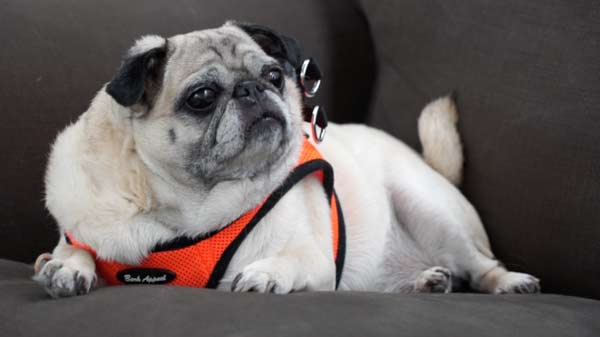
Chicago, US (BBN) - Humans aren’t the only ones who can go gray from stress – a new study has found that even dogs experience premature greying as a result.
Researchers examined muzzle grayness in dogs aged 1-4 and compared this with owner-reported signs of anxiety and impulsivity, reports Daily Mail.
Dogs with higher levels of these traits were found to have a greater extent of gray hair, especially those known to be fearful of loud noises, and unfamiliar animals and humans.
While it’s long been suspected that this may be the case for dogs, the researchers say the results were ‘quite striking.’
The team used a sample of 400 dogs from dog parks, shows, veterinary clinics, and other venues.
Each dog was photographed, and the researchers rated their muzzle grayness on a scale of ‘no gray’ to ‘full gray.’
Dog owners were asked to fill out a questionnaire assessing their dog’s anxiety and impulsivity, along with other behavioral characteristics.
To avoid bias, they were told the purpose of the study focused on dog lifestyle.
The questionnaire included statements like ‘my dog is typically fearful’ and ‘responds to groups of people by cringing, cowering, hiding, or not interacting,’ and owners ranked them on a scale from ‘strongly disagree’ (O) to ‘strongly agree’ (4).
The results, published in the journal Applied Animal Behaviour Science, revealed a link between these traits and a gray muzzle.
IS YOUR DOG PRONE TO GRAYING?
Anxiety and impulsivity levels were found to be a ‘significant’ predictor of premature graying in the muzzle, with fear responses to loud noise, and unfamiliar animals and people especially linked to the trait.
Rank the statements from 0 (strongly disagree) to 4 (strongly agree). 'My dog...'
MEASURES OF ANXIETY:
1. Is typically fearful
2. Tends to shed or lose hair during unusual times such as a veterinary exam or being in a new place
3. Either initiates or experiences hostility, dominance, threats, or fighting with other dogs
4. Whines or barks when left alone at home
5. Scratches, chews, or causes destruction when left alone at home
6. Urinates or defecates in the home when left alone
7. Whines or barks when at the vet
8. Cringes, cowers, hides, or tries to avoid handling when at the vet
9. Responds to groups of people by cringing, cowering, hiding, or not interacting
10. Responds to groups of people by barking or growling
MEASURES OF IMPULSIVITY:
11. Is calm when I return home
12. Jumps up on me when I return home
13. Jumps up on other people when greeting them
14. Can maintain a “sit-stay” calmly without agitation
15. Pulls on the leash when going on walks
16. Seeks attention by persistent barking
17. Would benefit from learning “leave it!” as a command
18. Loses focus and ignores me when there is a lot of activity occurring in the environment
19. Chases after small animals
20. Is hyperactive and wanting more exercise after 30–60 min of walking
21. Is calm and relaxed after 30–60 min of vigorous exercise (e.g., running, playing Frisbee, chasing/retrieving balls)
Researchers also considered a number of other factors, such as dog size, spay/neuter status, and medical problems.
But, these did not predict extent of muzzle grayness.
Instead, anxiety and impulsivity levels were found to be a ‘significant’ predictor of this phenomenon, with fear responses to loud noise, and unfamiliar animals and people especially associated with increased grayness.
They also found that female dogs were more likely to experience this type of graying.
‘Based on my years of experience observing and working with dogs, I’ve long had a suspicion that dogs with higher levels of anxiety and impulsiveness also show increased muzzle grayness,’ said Camille King, a Northern Illinois University alumnus and one of the authors on the study.
For dogs under the age of 4, the researchers say a gray muzzle could be a warning sign of anxiety or fear-related conditions.
The findings, they say, have implications for the animals’ welfare.
‘If dog professionals (veterinarians, applied behaviorists, dog trainers, etc) are able to note premature graying in their assessments and or training, then these dogs might be assessed more thoroughly for anxiety/impulsivity/fear problems, and, if necessary, started on behaviour modification programs earlier in their developmental life stages,’ the authors explained.
‘Additionally, owners could be educated to monitor for premature graying in young dogs.’
BBN/MS/ANS